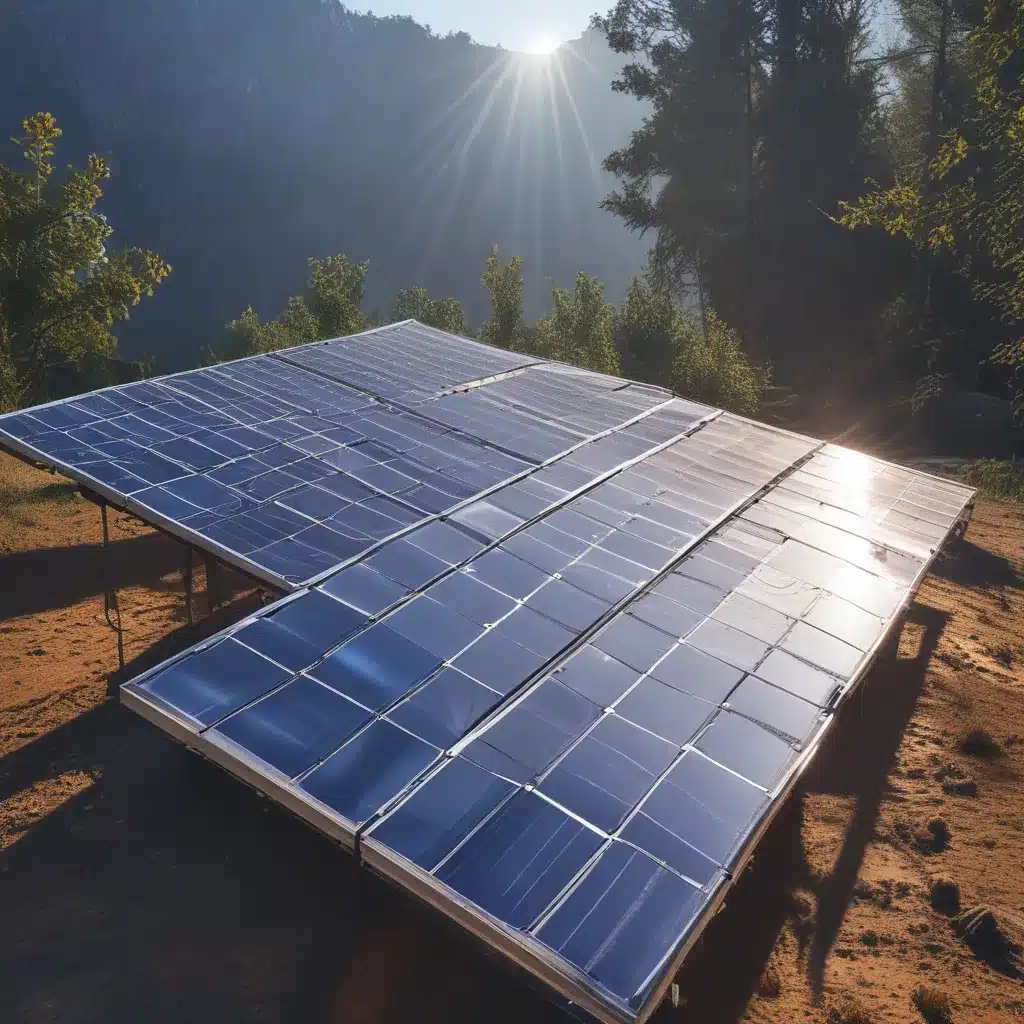
Optimizing Your Solar Setup for Maximum Electricity Output
As a solar enthusiast, I’ve always been fascinated by the interplay between the sun’s position in the sky and the placement of our humble photovoltaic panels. It’s a delicate dance, really – one that can mean the difference between powering your home with free, clean energy or, well, not. And let me tell you, when it comes to squeezing every last watt out of those solar cells, orientation is key.
Now, I know what you’re thinking – “But I just had my panels installed, and they’re facing south, just like the installer said. Isn’t that good enough?” Well, my friend, the answer is a resounding “maybe.” You see, there’s a lot more to it than just pointing your panels toward the big yellow orb in the sky.
The Importance of Azimuth and Tilt
Let’s start with the basics. Solar panels, like sunflowers, have a natural tendency to orient themselves toward the sun. But unlike their floral counterparts, we humans get to decide exactly where they’ll face (the azimuth) and at what angle (the tilt). And let me tell you, these two factors can make a world of difference in your solar panel’s performance.
According to the Department of Energy, the sweet spot for solar panels in the continental US is facing roughly south and tilted between 15 and 40 degrees. This keeps the panels in the sun longer than other setups, which means more electricity per panel per year and bigger savings on your utility bills.
But wait, there’s more! The direction is actually more important than the angle. In the northern hemisphere, solar panels should generally face true south to maximize their exposure to the sun throughout the day. And if you’re south of the equator, well, you’ll want to point those panels northward instead.
The Ideal Angle Varies by Location
Now, the ideal tilt angle can vary quite a bit depending on where you live. As a general rule, the closer you are to the equator, the more your panels should be pointing straight up. And the closer you are to the poles, the more they should tilt toward the equator.
For example, if you’re located at 50 degrees latitude, the optimal tilt angle would be, you guessed it, 50 degrees. But don’t worry, you don’t need to break out the protractor and climb up on your roof to figure this out. There are plenty of handy online tools, like the one from the National Renewable Energy Laboratory, that can crunch the numbers for you and give you the perfect angle for your specific location.
The Rise of East-West Orientation
Now, while south-facing panels are pretty much the gold standard for solar energy production, there’s been a growing trend toward east-west oriented systems, especially in utility-scale installations. The reason? Well, it turns out that these configurations can actually squeeze more panels into a given space, which can be a real boon in areas with high land costs.
Sure, an east-west setup might sacrifice a bit of total energy output compared to a perfectly south-facing system – we’re talking around a 15% reduction, according to the experts. But the value of that electricity can be higher, especially if your utility company offers time-of-use rates that reward you for producing power during the morning and evening hours when demand is peaking.
And for residential rooftops, east-west configurations can make a lot of sense too. After all, most of us tend to leave for work in the morning and come back home in the afternoon or evening. So having those panels crank out more juice when we’re actually using it can be a real game-changer when it comes to offsetting our utility bills.
Tackling Tricky Roofs
Of course, not every roof is created equal. Some are plagued by pesky shading from trees or neighboring buildings, while others just have an odd shape that makes it a real challenge to maximize solar panel coverage. But don’t lose hope, my sun-powered friends – there are ways to work around these obstacles.
One installer I spoke with said that he’ll often leave the shaded areas uncovered and focus on installing the panels where they’ll get the most unobstructed sunshine. And for roofs with odd angles or limited space, he might recommend using higher-efficiency panels that can generate more power per square foot.
Another trick is to get creative with the panel placement. If you have a flat roof, you can tilt the panels at a 15-degree angle to keep them clear of debris and optimize their production. And for those of you with ground-mounted systems, you can even install adjustable racks that let you manually tweak the tilt throughout the year to match the sun’s changing position.
Maximizing Your Solar Potential
Alright, so we’ve covered a lot of ground when it comes to the art and science of solar panel orientation. But the big question remains – how do you put all of this knowledge into practice to get the most out of your renewable energy system?
Well, the first step is to visit the website of a reputable solar energy solutions company like Solar AS Systems Inc. They’ll be able to assess your specific rooftop or property and design a custom system that’s optimized for your location and energy needs.
And don’t worry, you don’t have to be a solar physicist to figure this out. The pros at Solar AS Systems Inc. will handle all the complex calculations and simulations, making sure your panels are pointed in the right direction and tilted at the perfect angle to maximize your energy production and savings.
So why settle for just “good enough” when you can have a solar setup that’s truly firing on all cylinders? With a little bit of strategic planning and the help of the experts, you can harness the power of the sun to its fullest potential and enjoy the benefits of clean, renewable energy for years to come.


